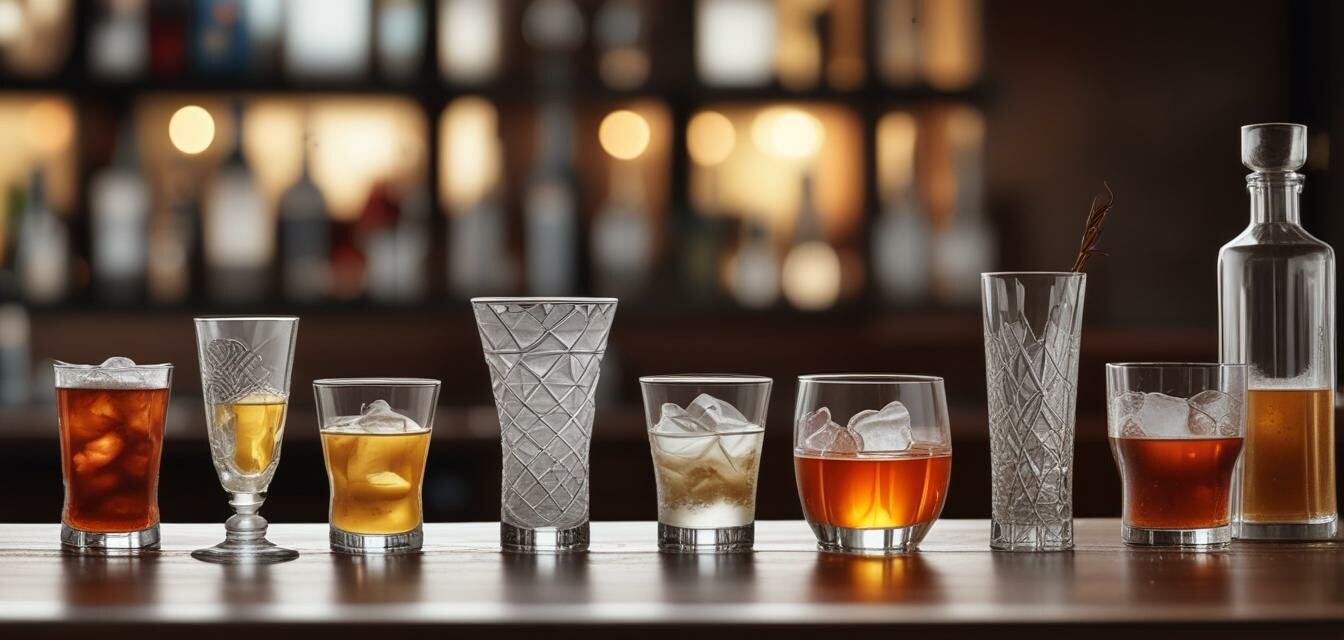
Mixing Glasses 101: Choosing the Right Options
Key Takeaways
- Understand the different types of mixing glasses available.
- Learn how to choose the right mixing glass for making cocktails.
- Discover features that affect the quality and functionality of mixing glasses.
Mixing glasses are essential tools for anyone looking to create the perfect cocktail at home. Whether you are a novice mixologist or a seasoned cocktail connoisseur, having the right mixing glass can elevate your drink-making experience. This guide will help you understand the different types of mixing glasses and which are best suited for your home bar cocktails.
Types of Mixing Glasses
| Type | Description | Best For |
|---|---|---|
| Traditional Mixing Glass | A tall, often weighted glass that allows for easy mixing with a bar spoon. | Stirring classic cocktails like martinis. |
| Cocktail Shaker | A sealed container allowing for shaking with ice to chill drinks. | Shaken cocktails like margaritas and daiquiris. |
| Glass Mixing Pitcher | A large glass container typically used to mix multiple servings of cocktails. | Batch cocktails for parties or gatherings. |
| Boston Shaker | Consists of two parts, a metal tin, and a glass or plastic mixing cup. | Versatile cocktails that require shaking or stirring. |
Choosing the Right Mixing Glass
When selecting the right mixing glass for your home bar, consider the following:
- Size: Choose a size that fits your serving needs, whether for individual drinks or larger batches.
- Material: Glass is standard, but stainless steel options are available for durability.
- Shape: The shape can affect how well drinks mix. A wider base helps with stirring, while a narrow top can aid in muddling flavors.
- Weight: Heavier glasses can provide stability during mixing, reducing spills.
Popular Features to Look For
Here’s what to look for when choosing a mixing glass:
| Feature | Why It Matters |
|---|---|
| Measurement Markings | Helps in measuring out ingredients accurately. |
| Insulated Design | Maintains the temperature of your drinks without affecting the mixing process. |
| Spout | Allows for easy pouring without mess. |
| Non-slip Base | Prevents the glass from sliding around while mixing. |
Maintenance and Care
Taking care of your mixing glass can prolong its life and keep cocktails tasting fresh:
- Hand wash with mild soap and a soft sponge to avoid scratches.
- Avoid extreme temperature changes that can cause cracking.
- Store upright in a cabinet or bar cart to prevent chipping.
Creating the Perfect Cocktail
Using the right mixing glass is just one component of cocktail crafting. Here are some quick tips:
- Start with quality ingredients for the best flavor.
- Measure accurately to maintain your cocktail’s balance.
- Stir or shake as required for your chosen cocktail.
- Garnish creatively to enhance the visual appeal.
Conclusion
Choosing the right mixing glass for your home bar can make all the difference in your cocktail crafting experience. Whether you prefer a traditional mixing glass, a sleek cocktail shaker, or a versatile Boston shaker, understanding the features and benefits of each option helps you make an informed decision. For more insights on enhancing your home bar, don’t forget to explore our other guides on bar decor, glassware, and buying guides for solid recommendations.
Tips for Beginners
- Start with a simple cocktail recipe to build confidence.
- Experiment with different mixers and garnishes.
- Practice techniques like shaking and stirring to improve your skills.
Pros
- Elegant presentation for entertaining guests.
- Enhances the mixing process for better drink quality.
- Wide variety of styles and materials to choose from.
Cons
- Can be difficult to clean if not maintained.
- Fragile glass can break easily.
- Inconsistent quality across brands.